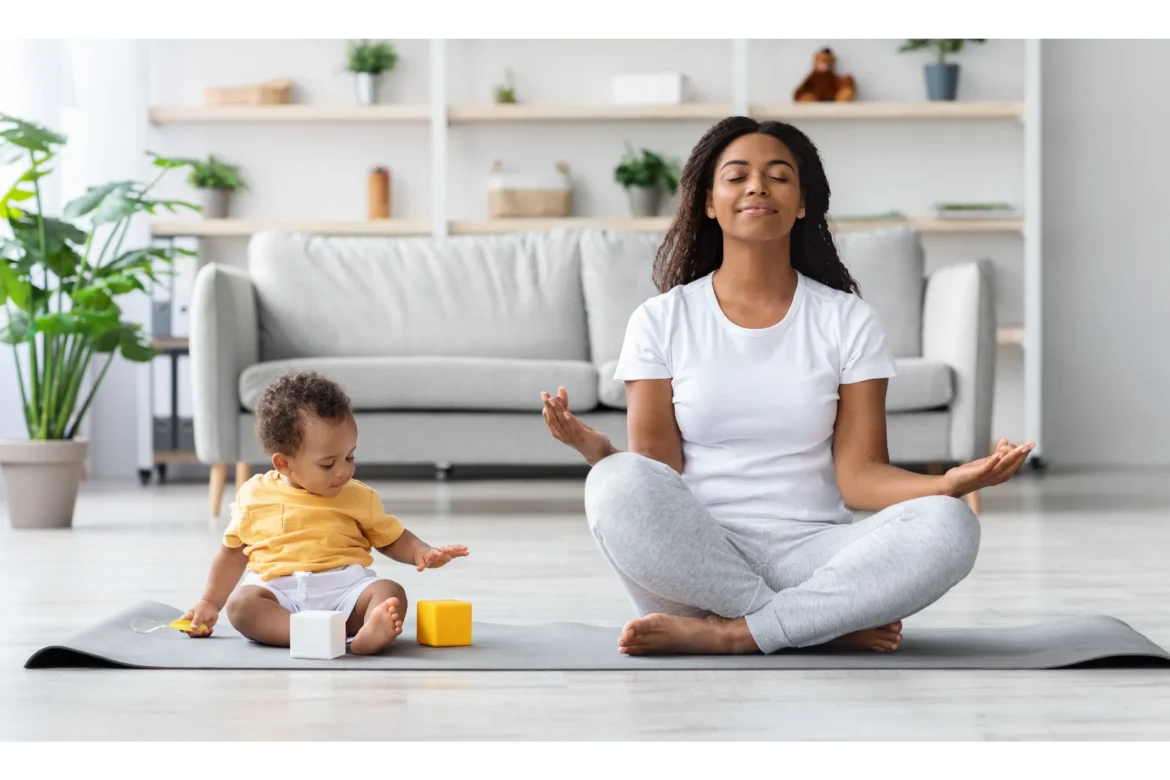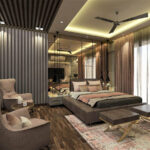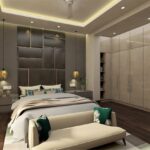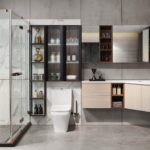Best 4 Wellness-Centric Interior Design Strategies For A Peaceful Lifestyle
Overview
“Your home should tell the story of who you are, and be a collection of what you love.”
– Nate Berkus
Elevate your well-being with top interior design strategies for well-being. Discover peace and serenity in your living spaces.
Our living spaces are no longer just physical structures in the present-day fast-paced society. They’ve become havens of peace and restoration. It’s evident that our domestic surroundings have a crucial influence on our mental and physical health. Nate Berkus, the famous designer, recommends that our identities and sources of happiness be reflected in our homes. This is the foundation of wellness-based interior design, which surpasses conventional emphasis on looks and highlights the significance of interiors in promoting our well-being.
Homes should reflect our identity and the things that bring us happiness. This is the crux of wellness-oriented interior design. It goes further than mere aesthetic considerations and emphasizes the critical function that interior spaces play in promoting our physical and psychological well-being. Whether you’re a homeowner wanting to revamp your living space or an interior design professional looking to deepen your practice, our blog delves into fundamental principles, provides expert insights, and offers practical strategies to reshape your approach to interior design.
Wellness-focused interior design goes beyond following fashion; it’s about creating spaces that touch your heart and make you feel happier every day. It’s all about making you feel relaxed, less worried, and more cheerful by making careful choices in design.
The Connection Between Wellness And Interior Design
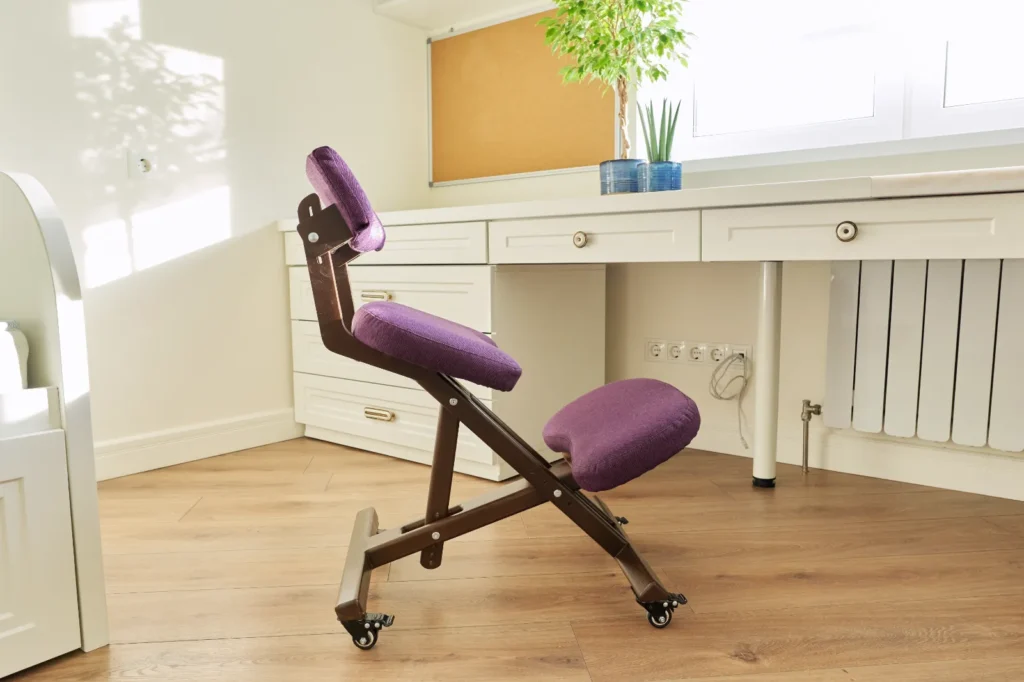
How The Environment Affects Mental Health
The ambiance you create through your home design can significantly influence your mental health. Imagine the impact of walking into a room with clutter and disarray. It can feel chaotic and stressful, right? On the contrary, a well-planned room with calming colors and comforting themes can promote a sense of peace and admiration.
Choosing Colors for Emotions: The colors you choose for your home design can evoke different emotions. Harnessing the power of colors in your home design allows you to craft an environment that fosters positive mental states.
The Impact Of Physical Space On Wellbeing
Wellness isn’t solely about your mental state—it’s also about physical health. The way you arrange your home décor, and furniture, manage clutter, and allow natural light to flood your spaces can significantly affect your physical well-being. An organized, clutter-free home décor reduces the risk of accidents and encourages movement and activity, supporting your overall health.
Ergonomics for Comfort: Ergonomics, or the science of designing for comfort and efficiency, plays a pivotal role in physical well-being. The way you set up your furniture and workspaces can impact your posture and physical comfort. For example, a well-designed home office with an ergonomic chair can alleviate strain on your back and enhance physical comfort.
Historical Perspective: The Evolution Of Wellness-Centric Design

Ancient Wisdom: Feng Shui and Wellness: Wellness-centric interior design has deep historical roots. Ancient civilizations like China and India integrated design principles with notions of balance, harmony, and well-being. The ancient Chinese philosophy of Feng Shui is a prime example, emphasizing the creation of a harmonious environment to promote health and happiness within home design.
Arts and Crafts Movement: Nature and Well-Being: In the late 19th century, the Western world saw the rise of the Arts and Crafts movement. This artistic and design movement highlighted the importance of craftsmanship and the use of natural materials as home décor items. It aimed to establish a connection between the human spirit and nature, advocating the idea that interior spaces should nurture the well-being of their inhabitants.
Modern Evolution: Research and Sustainability: Today, wellness-centric interior design continues to evolve. Thanks to the insights gained from current research in psychology, architecture, and sustainability, designers are equipped with a treasure trove of knowledge. By understanding the historical context and evolution of wellness-centric design, you can make informed choices to enhance your well-being through your home design.
Key Principles Of Wellness-Centric Interior Design
Wellness-centric interior design is about creating spaces that promote both mental and physical health. To achieve this, there are key principles that guide interior designers in making thoughtful choices. Let’s explore these principles in simple terms:
Mindful Space Planning
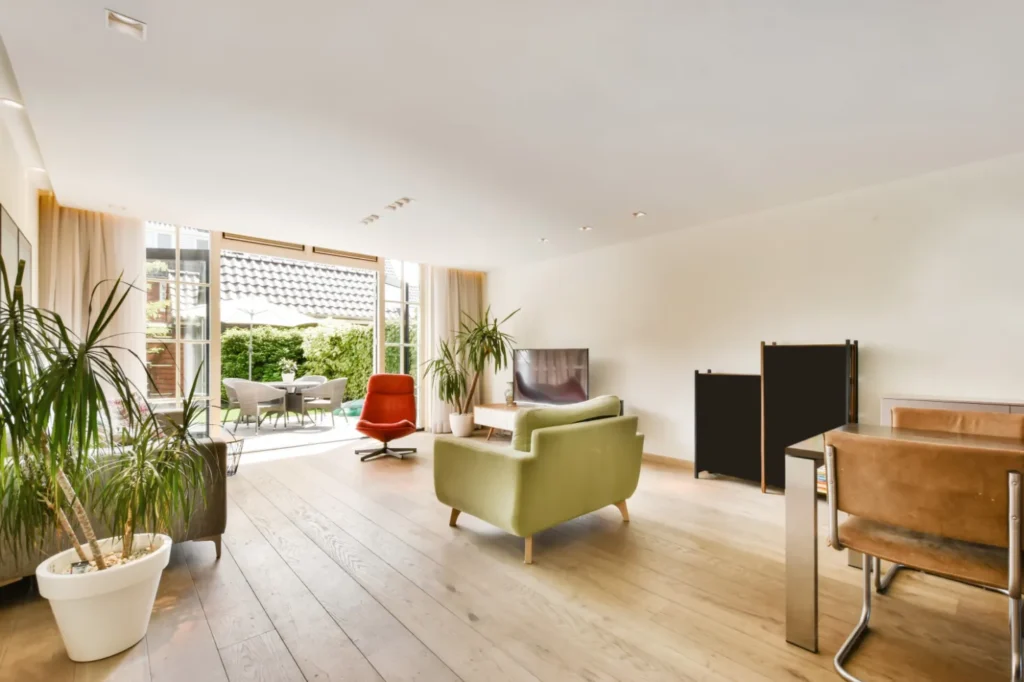
Creating Open and Flowing Layouts: When it comes to the layout of your space, think about the flow. A cluttered and cramped home décor can make you feel stressed and anxious. Wellness-focused interior design aims for open and flowing layouts. This means having enough space to move around without feeling cramped. When you can navigate your space with ease, it promotes a sense of calm.
Designing for Natural Light and Ventilation: Natural light and good ventilation are like a breath of fresh air for your mood. In wellness-centric interior design, we pay close attention to this. Designers ensure that there are plenty of windows to let in natural light. Sunlight not only brightens up the space but also boosts your mood. Adequate ventilation is of equal significance, ensuring a continuous influx of fresh air, which invigorates and enlivens your surroundings.
Color Psychology And Mood Enhancement
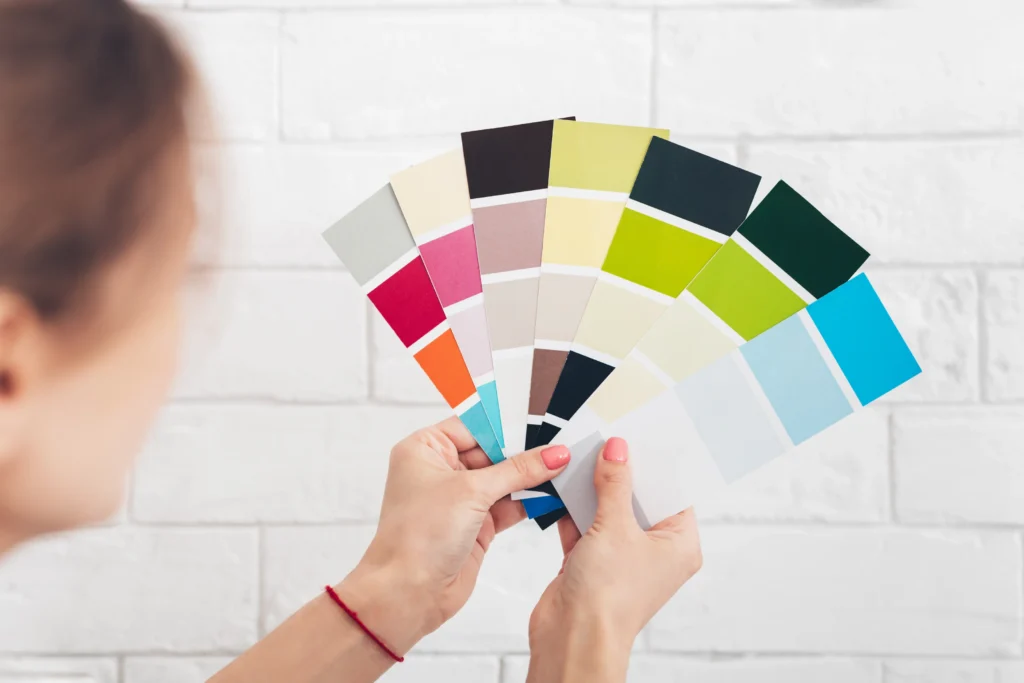
Selecting Colors that Promote Serenity and Vitality: Colors have a significant impact on your sentiments. When you prioritize functionality over fashion, colors are chosen to create a serene and lively atmosphere. For instance, soft blues and greens often evoke feelings of serenity and peace in the home design. Conversely, warmer shades such as red and orange can infuse a room with a burst of liveliness and energy. By selecting the right colors, you can create an environment that improves your mental health.
The Role of Texture and Materials: Textures and materials in your space also play a vital role in wellness design. Soft, tactile materials like plush cushions or cozy rugs as part of your home décor can create a warm and comforting feeling. Natural materials like wood or stone connect you with the earth and bring a sense of grounding. These choices in textures and materials aim to make you feel comfortable, secure, and at peace within your space.
Biophilic Interior Design And Nature Integration
Incorporating Plants and Natural Elements: Biophilic design is all about bringing nature indoors as part of your home interior. This means incorporating elements like indoor plants, natural wood, or stone in your design. Houseplants not only add a touch of green but also improve air quality, making you feel refreshed.
Benefits of Greenery on Wellbeing: Being around plants has a calming effect, contributing to lower blood pressure and improved mental health. Additionally, caring for plants fosters a sense of responsibility and purpose, promoting emotional well-being. Overall, the presence of greenery in your surroundings creates a more pleasant and healthful environment that positively influences your overall well-being.
Furniture And Layout Considerations
Your furniture and how you arrange it in your space play a crucial role in wellness-centric interior design. Let’s delve into the key principles in a simple and straightforward way:
Ergonomics For Physical Health
Choosing Furniture for Comfort and Support: Ergonomics is the art of selecting furniture that’s kind to your body. It means picking chairs, sofas, and beds that are designed to give your back and body the support they need. When your furniture is ergonomic, it keeps your body feeling good, reducing the chances of aches and pains. You can savor the comfort of your space while taking good care of your physical health.
Embracing Sit-Stand Workstations: If you work from home, think about adding sit-stand workstations to your setup. These desks are adjustable, so you can easily switch between sitting and standing as you work. This switch-up helps prevent those long hours of sitting, which can be tough on your health. The flexibility of sit-stand workstations is a win for your physical well-being, encouraging movement and giving your back and neck a break.
Multi-Functional Furniture For Space Efficiency
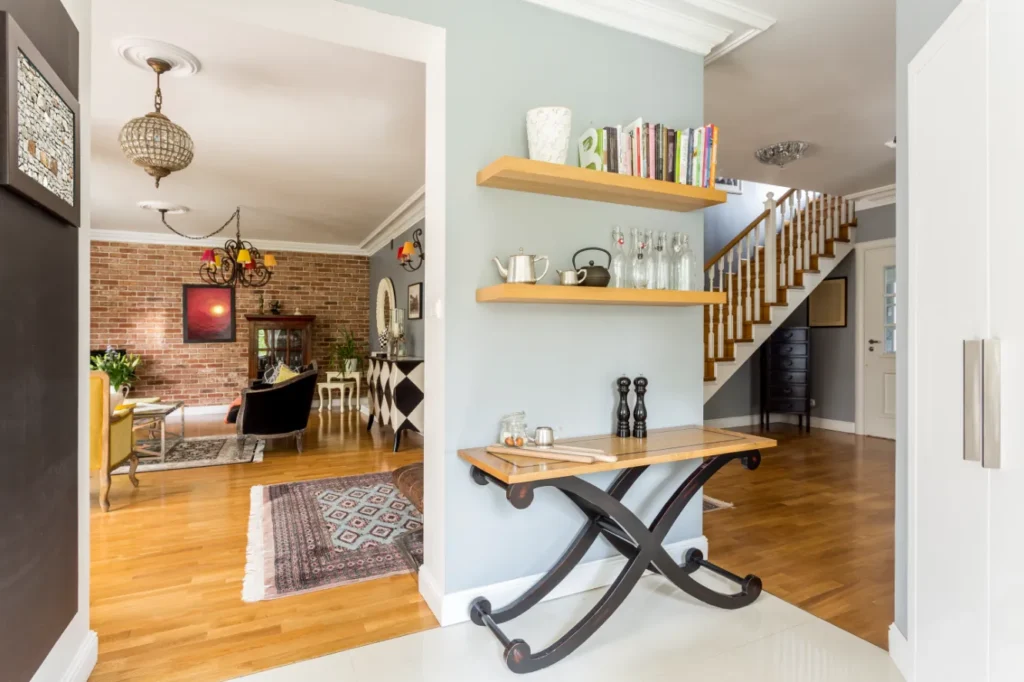
Versatile Pieces for Small Spaces: In tight quarters, furniture that multitasks can be a real game-changer. These pieces are designed to do more than one job. For instance, a sofa bed can be a comfy spot to sit in the daytime and turn into a guest bed by night. Or think about storage ottomans and coffee tables with hidden compartments; they’re pretty clever too. Multi-functional furniture is like a space-saving pro, helping you use your room to the max without feeling crowded.
Furniture That Promotes Movement and Flexibility: Furniture isn’t just about sitting or lying down. It can also encourage movement and flexibility. Think about pieces that promote physical activity, like swivel chairs or rocking chairs. These encourage gentle movements, which can be beneficial for your physical well-being. Movement within your space, even when you’re sitting, can help alleviate stiffness and enhance your comfort.
When it comes to furniture and layout considerations in wellness-centric interior design, think about how your choices impact your physical health. Ergonomic furniture, like supportive chairs and sit-stand workstations, ensures that your body remains comfortable and strain-free. For smaller spaces, versatile and multi-functional furniture is a smart solution, maximizing efficiency. Don’t forget to incorporate furniture that encourages movement and flexibility, as these elements contribute to your overall physical well-being within your space.
The Importance Of Lighting
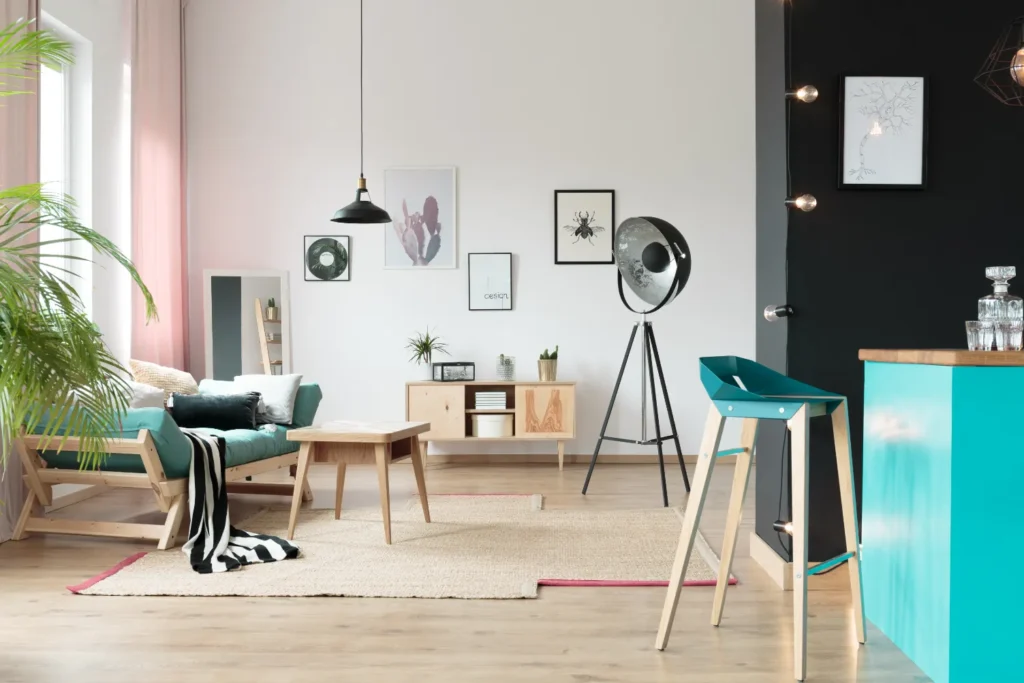
Lighting is a powerful tool in wellness-centric interior design. Let’s break down its significance with simplicity:
Natural Vs. Artificial Lighting
Maximizing Natural Light: Imagine natural light as the ultimate cheerleader for your Home design. It’s like Mother Nature’s spotlight, streaming through your windows and giving your room a standing ovation. Sunlight? Oh, it’s not just a light source; it’s a mood magician, capable of turning you into the life of the indoor party, bursting with energy and vibrancy. So, make sure your windows are clear for this star performer, and choose curtains so light and airy that even the sun can’t resist filtering through.
Implementing Proper Artificial Lighting: When the sun goes down or on cloudy days, we rely on artificial lighting. Proper artificial lighting is about having the right fixtures and bulbs. It ensures your space stays well-lit and inviting even when natural light isn’t there. Use fixtures that distribute light evenly and choose bulbs that emit a warm, soft glow. Harsh, bright lighting can create tension, while softer lighting promotes relaxation.
Lighting For Circadian Rhythms And Sleep Quality
Tunable Lighting Systems: Your body follows a natural rhythm called the circadian rhythm, which influences your sleep-wake cycle. Tunable lighting systems are designed to mimic this rhythm. They can change the color and intensity of light throughout the day in your home interior, providing energizing, cool light in the morning and calming, warm light in the evening. This helps regulate your internal clock and can lead to better sleep and increased daytime alertness.
Creating Relaxing Evening Lighting: The lighting in the evening can have a big impact on your sleep quality. Instead of harsh, bright lights, choose soft and warm lighting for your bedroom and living spaces. Dimmers can be a great addition, allowing you to control the brightness. Your body responds to this kind of lighting by winding down, making it easier to fall asleep and enjoy a restful night.
Natural light is a mood enhancer that should be maximized, while artificial lighting, when done right, keeps your home interior inviting. Tunable lighting systems and soft evening lighting cater to your body’s internal clock, ensuring you sleep well and stay alert during the day. By paying attention to the lighting in your home design, you’re taking a significant step towards enhancing your overall well-being.
Incorporating Mindful Décor
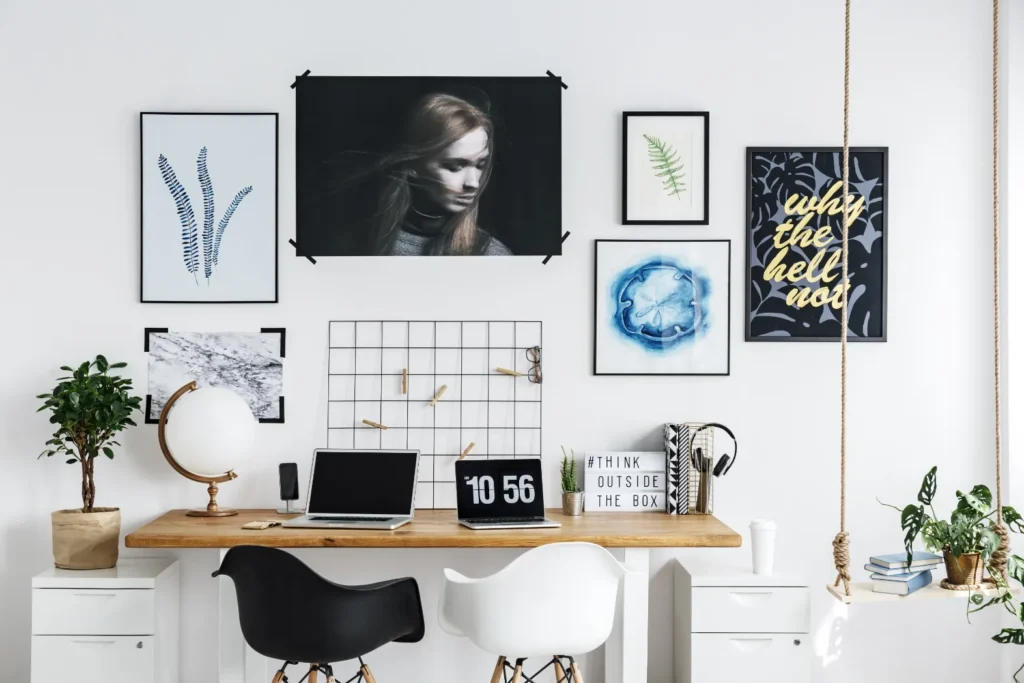
Décorating your home interior isn’t just about looking pretty; it’s about creating a haven that speaks to your soul. Let’s dive into the art of mindful décor:
Personalized Art And Décor
Emotional Connection to Art: HomeDécor isn’t just about filling empty walls; it’s about telling your story. Personalized art and décor pieces with an emotional connection are like your space’s journal. Whether it’s a painting, a photo, or a handmade craft, choose items that resonate with you. Every glance becomes a reminder of the meaningful moments and people in your life, adding a personal touch to your space.
Displaying Positive Memories and Inspirational Pieces: The art you choose isn’t just about the visuals; it’s about the feelings it stirs. Displaying positive memories and inspirational pieces in your space can have a profound effect. Whether it’s a photo of a loved one, an inspiring quote, or a piece of art that lifts your spirits, these items contribute to a positive atmosphere. They’re like little bursts of motivation and joy in your daily life.
Reducing Clutter And Promoting Organization
Decluttering Strategies: Mindful home décor is also about what you don’t put in your space. Less is often more. Decluttering is your superhero in the battle against chaos. Create decluttering strategies that work for you. It could be as simple as the “one in, one out” rule – for every new item you bring in, one old item goes out. Reducing excess stuff paves the way for a clean, calm space that’s easy on the eyes and the mind.
Storage Solutions for Clean and Calm Spaces: Storage is your ally in the war against clutter. Think about clever storage solutions that keep your belongings organized and out of sight when not in use. Ottomans with hidden compartments, wall shelves, or under-bed storage can work wonders. With a place for everything, your home interior remains tidy, and your mind remains at ease.
Mindful décor is an art in itself. Personalized art and home décor pieces build a connection between your space and your soul, creating an environment that feels uniquely yours. By displaying positive memories and inspirational items, you surround yourself with reminders of joy and motivation. Decluttering and smart storage solutions keep your space organized and serene, allowing you to fully appreciate the beauty of your surroundings. So, go ahead, and create a home design that’s not just pretty, but also meaningful and stress-free.
Practical Tips For Implementing Wellness-Centric Design
Turning your space into a wellness-centric haven doesn’t have to be rocket science. Let’s explore some practical tips that strike the perfect balance between DIY enthusiasm and professional guidance:
DIY Ideas For Homeowners
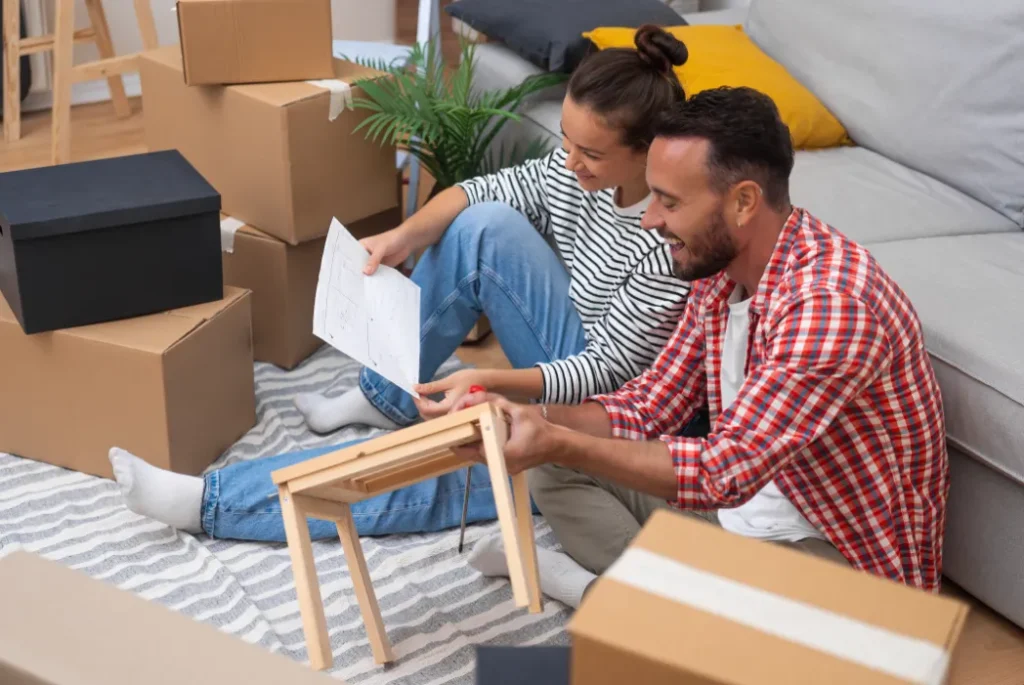
Décorate and Elevate: For all you homeowners, get ready to roll up your sleeves and put your DIY hats on. There are plenty of small changes you can make in your home décor that’ll have a big impact. Start by adding a few houseplants – they’re like little bundles of happiness that improve air quality. Or, consider a fresh coat of paint. Choose soothing, soft colors for a calming effect, or go for a vibrant accent wall to add a pop of energy.
Reimagine Layout of your Home design: Shake things up by rearranging your furniture. Sometimes, all it takes is a new layout to give your space a fresh feel. Think about open and flowing designs that create harmony and tranquility. If you’re feeling adventurous, take on some easy woodworking projects like a custom bookshelf or a cozy window seat.
Light It Right: Proper lighting can transform your home interior, and it’s something you can tackle yourself. Swap out harsh bulbs for softer, warmer ones to create a cozy ambiance. For a dose of circadian rhythm magic, invest in smart bulbs that can change color and intensity throughout the day. They’re a DIY delight.
Collaboration And Communication With Design Professionals

Dreaming Big with Design Pros: Sometimes, you might need the magic touch of a professional designer. Collaborating with design pros can bring your vision to life. Start by finding a designer whose style resonates with your vision. Remember, it’s a partnership – they bring expertise, and you bring your preferences and needs.
Communicate Your Wants and Needs: The key to a successful collaboration with an interior design professional is open communication. Be clear about your objectives and share what wellness means to you. Do you need a home office that maximizes productivity, or a bedroom that promotes restful sleep? Sharing your goals helps your designer tailor the project to your well-being.
Budget Wisely: Discuss your budget openly. Design professionals can help you make the most of your investment. They know where to allocate resources for maximum impact. Be honest about what you’re comfortable spending, and they can work within those parameters to create a space that supports your well-being without breaking the bank.
Incorporating wellness-centric design into your home can be a delightful blend of DIY creativity and professional collaboration. Homeowners, you’ve got the power to make small but impactful changes on your own, from décorating with plants to lighting it right. And when it’s time to dream big and bring in the pros, open communication, and budget discussions are your secret weapons.
Conclusion
Throughout this journey, you’ve explored how your environment can influence your mental health, harnessing the influence of colors, textures, and layouts to establish serene atmospheres. Mindful home décor has allowed you to imbue your spaces with your personal touch, creating connections to cherished memories and sources of inspiration.
From considering ergonomics in your furniture choices to embracing multi-functional solutions for efficient space utilization, you’ve grasped the significance of lighting, the inclusion of greenery, and gathered practical advice for both DIY enthusiasts and those collaborating with design professionals. Within the harmony of your creative expression and the formality of design principles, you have harnessed the ability to shape spaces that elevate your overall well-being. In the end, wellness-centric interior design is your tool for crafting spaces that resonate with your soul, alleviate stress, and amplify your happiness—one thoughtfully designed space at a time.
The ideas presented in this blog can serve as valuable inspiration for homeowners and interior design professionals alike. Partnering with a reputable interior design firm can help you turn these concepts into reality, ensuring your space truly promotes your mental and physical health.
At ‘The White Frame,’ our design professionals have a deep understanding of wellness-centric interior design. We’re here to make the strategies you’ve discovered in this blog a reality in your home. Contact us Today!
Explore some of our work Here!


